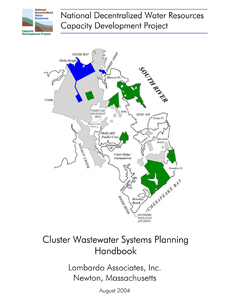Brookfield was awarded three Clean Water Fund Planning Study grants from the Connecticut Department of Energy and Environmental Protection (DEEP) in May 2019 and January 2022. One 2019 Planning Study was for a Brookfield Facilities Plan. It was completed August 2020 by CDM Smith.
The other in 2019 was for a focused Planning Study for the to Candlewood Lake Area to intercept the septic flows to the lake. The Candlewood Lake area is not currently part of the Brookfield sewer system. Brookfield selected Lombardo Associates, Inc (LAI) as the engineering company Candlewood Lake Area Planning Study.
The Clean Water Fund Planning Grant of 2022 is funded to develop an 80% design of complete engineering sewer systems for the Dean/Pocono Road areas and the Candlewood Peninsula.
 |
Engineering Agreement: Download the engineering agreement and work plan approved by CT DEEP for a 55% Clean Water Fund Planning Grant. The purpose is to develop the sewer system designs for the Candlewood Peninsula and Dean Road areas at a greater cost-share by the state than the conventional 20% Clean Water Fund construction grant—a savings to Brookfield of over $500,000. The 45% difference will be provided in the form of a loan from the WPCA to be repaid when the project is funded by a Bond. The work starts first quarter 2022 | A 23-page agreement. The work plan starts at page 14. What’s next? Sewer extension approval process outline. December 2021 | ||
| BWPCA Facilities Plan (Awarded) | Candlewood Lake Study (Awarded) | Still River Brookfield (Not Awarded) | ||
 |
 |
 |
||
| Final Facilities Plan | Candlewood Final Report | Dean/Pocono Road Report | ||
 |
 |
 |
||
| Candlewood Task 2 Summary | Candlewood Task 2 Full Report | Candlewood Task 3 Report |
[Updated September 15, 2020]
Brookfield WPCA coordinated the studies where they intersected. In addition, Brookfield has used its engineering firm Langan, as needed at its expense, for advice and counsel in working with the planning studies. Langan has a great deal of institutional knowledge in Brookfield.
These were both 55% Clean Water Fund study grants. The WPCA sponsored the remainder. Separately, the Still River project grant was part of two competitive grant programs. Notice came through in October 2019 the Still River study grant was not awarded. See the full application submissions as PDF above.
| Cluster Wastewater Planning EPA Handbook by LAI |
Phosphorus Geochemistry in Septic Systems |
Brookfield Study Task 1 Report |
||
 |
 |
 |
Note: These are very technical documents. Expertise in Chemistry, Environmental Sciences, Engineering and the like are useful to grasp the concepts in these documents. Click on images to download these papers.
NY Suffolk County Sewering 6400 Homes to Protect Waterways.
Excerpts from a Wall Street Journal article Feb 8, 2019 that read on the effort to sewer Candlewood Lake.
(You must have a subscription to WSJ to see the full article on-line.)
Suffolk County has struggled to fix its sewer problem for decades, and officials there finally have the money and voter approval to start installing sewers in two low-lying areas. Voters recently approved a $360 million project that will connect nearly 6,400 homes to public sewers. The installation will be funded by a mixture of state and federal grants.
Nearly 75% of the Long Island county’s 1.5 million residents rely on cesspools and septic systems, officials estimate. Those older forms of waste management result in nitrogen pollution that threatens water quality and wetlands and is blamed for algae blooms, which lead to beach closures and fish kills.
County Executive Steve Bellone, a Democrat, said the rare infusion of grant funding, as well as mounting concerns over water quality, finally made sewers politically and financially feasible. “We really started thinking about how we can leverage resiliency funding in a way that will … improve water quality,” he said in an interview.
In January, more than 85% of voters in parts of the towns of Babylon and Brookhaven approved the sewer project. The funding will cover sewer-main construction, including homeowner hookups, as well as the cleaning and capping of existing cesspool and septic systems. Homeowners will then pay annual operation and maintenance fees projected to range from about $470 to $530 depending on location, officials estimate.
Elected officials say cutting down on nitrogen pollution will help restore wetlands that protect the waterways.
